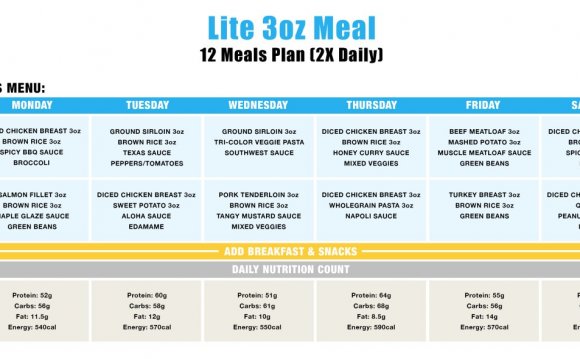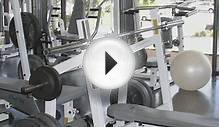
A calorie (actually a kilocalorie) is a unit of energy. Scientifically speaking, it's the amount of energy needed to raise the temperature of 1 kilogram of water 1°C. Since your body maintains a core temperature of roughly 37°C, 24/7, it’s obvious that you need a certain number of calories just to exist. The number of calories needed to perform basic life functions (like breathing and thinking) is known as your .
Activities such as walking, talking, eating and – yes – exercise require additional energy. So, your is your REE, plus the energy used for physical activity and digestion (aka the “thermic effect of food”).
To put it another way…
Your TDEE is the total number of calories you can eat without gaining or losing weight.
Not surprisingly, this is the starting point for any plan designed to chisel off body fat, including this one. So forget about ads for books, programs or supplements that claim you can "eat all you want and still lose weight." If you want to reduce your body fat, you need to reduce your calorie intake, too – that’s the bottom line.
BUT...
There’s always a catch, isn’t there? Reduce your calories too much, and you risk…
- There’s always a catch, isn’t there? Reduce your calories too much, and you risk…
- Triggering the dreaded, “starvation response;”
- Feeling miserable, hungry and depleted.
You’ll also be setting yourself up for rebound fat gains. The numbers don’t lie: the vast majority of dieters regain their lost weight, and sometimes more.2
The Lean Body Promise plan was designed to prevent this! By strategically balancing your protein, fat and carbohydrate intake, it ensures you can safely lose up to 2 – 3 pounds of fat/week, without dropping too far below your TDEE.
Protein, Fat and Carbohydrates
Protein, fat and carbohydrates are collectively known as “macronutrients.” Each macronutrient supplies your body with essential metabolites AND energy.
Protein
Protein provides you with the amino acids your body needs to produce its own proteins – including muscle!
Body proteins are “dynamic” – that is, they’re constantly being broken down (catabolism) and rebuilt (anabolism). The amino acids released from broken-down proteins can either be a) recycled and re-used; or b) burnt for energy.
Normally, muscle catabolism and anabolism are balanced, so that there is no net loss or gain of muscle tissue. Eating below your TDEE, however, tips the balance towards muscle loss, since your body needs the energy!
Fortunately, you can tip it back by a) hitting the weights; and b) eating the right amount of high-quality protein. A good amount of protein to aim for is 1 gram per pound of bodyweight. This is more than most dieticians recommend, but it’s perfect for hard-training guys who need to maintain (or gain!) lean body mass. 3
| Optimal Protein Sources | Sub-Optimal Protein Sources |
|---|---|
| lean beef (flank steak, beef tenderloin, 96% lean ground beef) | deli meats |
| skinless chicken breast | hard cheeses/processed cheese |
| turkey breast | lunch meats/hot dogs |
| egg whites | bacon/sausage/salami/pepperoni |
| fish/shellfish | whole milk/milk drinks/milk substitutes |
| pork tenderloin | fried chicken/fish |
| non-fat cottage cheese | ground beef with >4% fat (by weight) |
| nonfat Greek yogurt (plain) | cuts meat with visible fat/marbling |
| water-packed tuna | buffalo wings, bbq ribs |
Note: don’t be fooled by front-of-package labeling! This may come as a surprise, but more than half of the calories in 15% “lean” ground beef come from fat! This is because the label is based on the percentage of fat by weight. Since fat is a concentrated source of calories, even small amounts of fat can add a lot of unwanted calories.
As you can see from the table, an optimal source of protein is…
- Low in fat, carbohydrates and sodium;
- Derived from animals rather than plants.
Derived from animals rather than plants.
Fats
Once upon a time, “fat” was a four-letter word; and diets that slashed fat intake to the bone were all the rage (in fact, severely low-fat diets are still popular in some quarters). Nonetheless, some dietary fat is important for good health and optimal (anabolic!) hormone levels. A little goes a long way, though, since fat is a very concentrated source of calories (9 calories/g vs. 4 calories/g for protein & carbs). Because of this, you should limit your fat intake to 0.3g per pound of bodyweight, with the bulk of it coming from natural, whole food sources and small amounts of unrefined and/or supplemental oils. Good (and not-so-good) sources of fat are listed below.
| Optimal Fat Sources | Sub-Optimal Fat Sources |
|---|---|
| almonds/walnuts/pistachiosskinless chicken breast | commercial cooking oils |
| ground flax seed | margarine/butter |
| hemp/sunflower/sesame seeds | commercial salad dressings/mayonnaise |
| wild-caught salmon | |
| avocadoes | whole milk/half & half/cream |
| extra-virgin olive oil | shortening/lard |
| fish oil | |
| EFA Lean Gold | cuts of meat with visible fat/marbling |
Note: be especially wary of foods containing “partially-hydrogenated vegetable oil.” Partially-hydrogenated oils contain harmful trans-fats, which are linked to heart disease and strokes.4
What makes the fat sources on the left better choices than the ones on the right? The ones on the left provide heart-healthy monounsaturated and/or omega-3 essential fatty acids. Foods like nuts, seeds, avocadoes and salmon also supply valuable nutrients in addition to the fat. On the other hand, the fat sources on the right contain excessive amounts of saturated fat, trans-fats and/or pro-inflammatory omega-6 fatty acids.5
INTERESTING VIDEO












